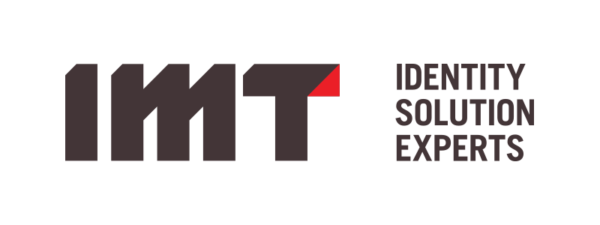A provider’s ability to provide patient care often depends on the timely completion of diagnostic imaging tests. Current requisition processes can be wrought with long wait times and sometimes, orders are never scheduled because the patient does not call to schedule an appointment, or the request gets lost in route.
Take a look at these statistics:

In today’s blog post, we will summarize how IMT helped a multi-facility healthcare provider ditch the paper, faxes, and phone calls for diagnostic imaging scheduling requests to reduce delays and close the loop between electronic requisitioning and report delivery to ordering practitioners.
Before: Electronic requisition submission was available, but disconnected
At this healthcare organization, ambulatory and acute providers used different enterprise EMRs in the hospital and for the physicians’ group. Even though both EMRs supported electronic order entry and “spoke” HL7, the systems could not talk to each other without intervention.
Here is the process that ordering providers and staff followed to submit DI scheduling requests:
- Physicians entered diagnostic imaging requisitions electronically in the ambulatory EMR
- A printed copy was handed to the patient
- A copy was faxed to the diagnostic imaging scheduling department
If the requisition was high priority, an ambulatory staffer also called the schedulers via phone. With this process, too much time was wasted on manual handling that introduced errors and delays in scheduling.
- Patients often misplaced their paper requisitions, which then required a follow-up phone call from the scheduling staff to the provider’s administrative staff to obtain a signed copy.
- Requisition forms lacked critical data for billing pre-authorization and claims. That meant schedulers had to spend a lot of time on the phone collecting additional information before they could schedule the procedure.
- Schedulers then had to manually scan the paper requisitions into their own EMR to ensure a signed copy was on file.
- After the procedure was complete, the completed report was faxed back to the ordering provide. Although the reports were returned electronically, a manual review and linking process needed to occur before the reports were applied against the patient’s record in the ambulatory EHR.
Assisting the process, with integration, workflow and worklists
IMT worked with this provider to implement our Order Queue Manager for Diagnostic Imaging (OQM-DI) as a hosted integration and portal service to bridge the two sides of the ordering and fulfillment process. OQM-DI enables smart integration, data translation, and enrichment between EHRs, bundled with an EMPI to reconcile patient identities across both EHRs.

OQM-DI also provides a Worklist that helps prioritize requisitions waiting to be scheduled, while ensuring all the required information is readily available.

After implementing OQM-DI, the process is more streamlined:
- Ordering physicians and staff enter imaging requests in the ambulatory EHR as a part of the patient’s clinical record during a patient visit.
- The practitioner’s EMR sends HL7 ORM transactions to OQM with all required information needed for scheduling, including patient demographics and insurance, procedures, diagnosis codes, electronic signatures, and clinical instructions.
- OQM receives the requisition and “queues” the order, presenting it in the OQM-DI Worklist.
- Schedulers use the Worklist to register and schedule patient procedures in the EHR, prior to releasing the transaction to their system.
- At the time of release, OQM-DI resolves the sending EMR MRN to the correct patient MRN for the hospital system through integration with the EMPI, and connects all physician IDs and names, procedures and billing codes required to place the scheduled procedure on the imaging tech’s worklist within RIS.
- After the procedure is complete, OQM-DI receives and routes the electronic radiologist report (an HL7 ORU transaction). The report is matched to the original order and translates the patient’s MRN, procedure codes, and provider information to values the practitioner’s system can understand.
Faster scheduling, quicker results, better patient compliance
With a fully paperless option that minimizes the back-and-forth, common scheduling requests are now scheduled within hours. Previously the time lag between ordering and scheduling could take days or weeks. Now, patients are seen more quickly and providers can diagnosis critical conditions sooner.
Physicians and staff now spend less time on the phone clarifying and collecting details or trying to locate diagnostic reports. Physicians can easily locate the imaging reports within the EHR, with no need to locate or approve incoming fax reports.
Scheduling staff now have access to the exact signed order they need, with all the pertinent details, and an electronic record of the original requisition is available in the EHR without scanning. Multiple schedulers share a single Worklist to manage all the high-priority requisitions, better balancing their workloads while ensuring those high-priority requisitions receive the attention they need.
New insights yield additional process improvements
With OQM-DI in place, the provider quickly discovered that physicians and staff were not always ordering the correct test the first time – and the orders were often corrected by that series of back-and-forth phone calls. Digging further, the provider realized that some physicians did not know which procedures to choose. As a result, the provider cleaned up the order catalog and established clear guidelines between the medical center and ordering physicians that streamlined the process – and improved billing and claims submission.
With the OQM framework in place, this provider now has an integration service that will also them to share new types of scheduling requests and leverage the existing scheduling workflow to communicate pre-qualification identifiers generated as per Acceptable Use policies for expensive imaging services for Medicare patients.
Interested in learning more about OQM-DI? Contact sales@imt.ca for a demonstration or download our fact sheet.
Also, watch our video to learn now OQM streamlines lab requisition and result processing, too!





